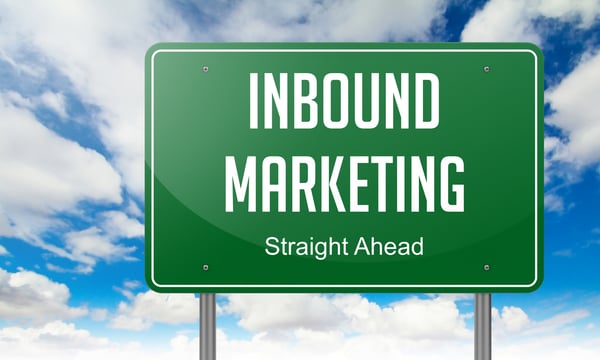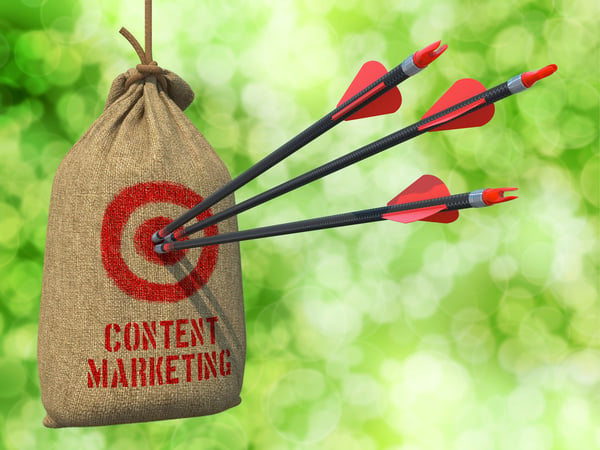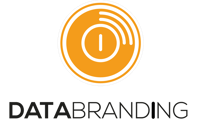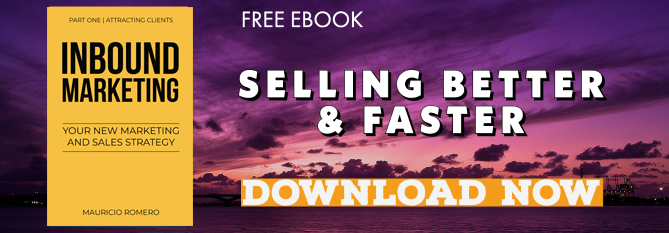
Digital marketing is a trend and we hear almost-miraculous millionaire success stories. What are the assets that make digital marketing more attractive than the traditional one? Is it really that good and easy to do? Doesn't traditional marketing work anymore? Find the answers in this article.
A well-done marketing strategy must take into account all the factors of the market in order to generate demand for a product or service. Within these factors, it should take into account the 4 P's: price, product, place and promotion, we will here talk about the last one. How to effectively deliver the message, communicate the value of your offer and generate demand?
Within the analysis of the surroundings, marketers must understand the uses and customs of their market. With the arrival of the internet, we have adopted a new habit and use, which is searching for everything we need online. And we have left behind the habit of spending too much time on mass media.
Why did this happen? because people would rather focus on consuming the information they need, right at the moment when they need it, unlike what happened before. Before the internet, somebody else decided for us the information that we would see (on mass media) and, from that information they decided to share, we all tried to rescue the pieces that we actually needed.
That is why the use of free television has decreased and on-demand television, such as Netflix, has increased (just to mention this medium as an example, but being able to mention many others in the printed media and in radio as well).
From this habit, use or new practice, two tendencies are identified:
Outbound vs Inbound

What's an Outbound Strategy?

Outbound makes reference to the traditional marketing and advertising strategies, which are based on use of traditional mass media. These media are: the press, radio and television. Direct mail, expos and cold-calls are also considered outbound strategies.
It is clear that advertising was born that way and it worked very well until the Internet arrived.
Before the Internet, mass media were the owners of information. They chose what information to share on each context. And since the most practical place -and sometimes the only one- where we could all see this information was on the mass media, there was no other way to advertise something but by broadcasting the products for a long period of time to the audience.
These media stopped being as effective as they used to be since the information is now one click away from us and, if we know exactly what information we need, we won't wait for the traditional media to share it with us.
Pros and cons of Outbound
The most important disadvantage is that we no longer use that media for long periods of time anymore, so they've lost both audience as well as the time this audience spends on them. Another huge disadvantage is that we can't easily measure the results and if we do, it's to expensive to do so.
How many people saw my billboard? and from those who did, how many were actually interested? and from those, how did go to my shop? how many bought something? Yes it can be measured, but the costs of measuring this are the same of even higher than the advertising campaign itself.
The most important benefit that they still have, is that they can reach lots of people in a very short period of time.
The most important issues to discuss these pros and cons of Outbound Marketing, are:
Unidirectional non-interactive medium
Let's say things the way they are: it's a medium in which the programmer and advertiser share the content and messages that THEY choose to share. Plus, there isn't a chance for feedback, unlike the chance we do have of replying with social networks. It's a selfish monologue.
People trusted those who advertised their brand in these media because of the familiarity that the brand created. This familiarity was based on an endless repetition of the same message (over and over again). This is what advertising marketing campaigns are (or were).
Lots of money and big budgets

Mass media helps building brand awareness so that many people know about the brand. This strategy generates huge costs which are passed on to the advertisers. This has made the hiring of these services very inaccessible for the majority of companies. Only transnational companies can pay such high costs and broadcast their very expensive messages over and over again, in many different media.
It the target of your company is to create brand awareness, then yes, they are a good option for you.
Spill-Over or reaching people who aren't even you target market
Since these media are massive, their real strategy is that anyone who has 2 eyes, 1 nose and 2 ears, gets to know that you exist. Yes, they created target groups but they were basically old-school stories that worked for nothing.
I always use menstrual pads as an example. The brands of these products spent millions of dollars in getting people to know them and I, as a man, won't even be their client, influencer of buyer of their product... ever! Yet, they've broadcasted their brand on every single media aiming to build familiarity by means of endless repetition and constant presence on every media. And the costs-per-impact are all the same, regardless of the audience that they are reaching, target client or not.
Invasive

Who doesn't know that interrupting isn't right or polite? Well that's what these messages really do. You are consuming your content, a very interesting program, say National Geographic, when you are suddenly interrupted with a commercial and you receive a message that doesn't interest you, that you didn't ask for, from someone you don't know. Actually, it's annoying. This is what we now call SPAM.
This is why I consider that YouTube, Display, Facebook and Google Adwords ads, are some actually Outbound too. Even if they are considered of the digital era. Their characteristics are the same.
Resources for an Outbound Strategy

The message of an outbound campaign has to be very creative in order to get attention. It requires a great effort of communication experts to be able to say what has to be said, in a very limited space or time, since it's more expensive.
This creativity and expertise is found in traditional advertising agencies where the creatives, the art director, the account executive, the producer and the media center, will spend a whole month designing your message, creating a story around what your product is, and will launch a single message that will take the form of a video for TV, a musical jingle for radio and an exceptional art design for print media. There is no room for any error, everything has to be precise and perfect.
It takes too much money in order to produce all these materials plus, all the money that you'll also spend in broadcasting them during at least 3 months, every day, on different shows and at different times, during those shows.
What's a Inbound Strategy?

An inbound strategy is all about using digital media so when a person is looking for a solution or an answer to the question that she asked on the search engine's page (such as Google) she gets to see your product or service as one of the results given by this search engine.
This is why we say that the content attracts that person who's already looking for it. Unlike Outbound, where the content is sent to everyone hoping that someone will be actively looking for or in need of your product or service, right at the time when they receive your message.
Pros and Cons of Inbound Marketing
The main benefit would be that the solution or message of the company or product gets to the client right when they are looking for it. In other words, at the time when this person is actively looking to solve his problem or actively hoping to get some help in making the decision, that is, to buy.
Maybe I haven't mentioned this too clearly: Companies exist because they help people solving a problem or need. People these days, whenever they've a problem or need, they look for ways to solve it online.
Voilá! it's a perfect connection that lets us help a future client.
What companies have to do is give an answer to each and every one of the questions that their customers ask about how the company's products or services which can help them solve their problems or needs.
The disadvantage of this strategy, perhaps, is that it takes a lot of effort, a lot of content to be made and a considerable time to see results. It isn't built as fast as an Outbound advertising campaign is.
Remember that with an Outbound Strategy, a lot of money is invested and in a month of planning and 3 of exposure, you'll see immediate results.
To see results with an Inbound Strategy, you need to make a constant publishing effort during at least 6 months.
Here are the main aspects to consider from Inbound Marketing:
Attract in an interesting, useful and pleasant way

When we say that content is king, we mean that you need to create content that is interesting and also helps solving the person's need. Remember that whenever a person goes online to ask for a solution to their problem, this person is usually just making some previous research, not buying -yet. So every "buy me" message will be discarded by the user.
You need to create content that is helpful to the buyers in terms of the options that they have and on how you can solve their need. By doing so, you'll be helping them make a purchasing decision and, since you've been with them all along with your content, they'll probably choose you.
Inbound Marketing content formats

You know what they say, different strokes for different folks. Just like we did before, we now also consume the same content in different formats. For instance, some people are more visual than auditory and viceversa. There are people who like to read and others get tired of it. So the Inbound Marketing content has also to be produced in different formats.
Audio is good for those people who like doing other activities while consuming their content. For example, a person who likes to jog while listening to an audiobook, or that drives while listening the news.
Video is good for those who are looking for a quick answer and that are mostly visual. For example, someone who is looking for a tutorial on how to use an specific app. The disadvantage is that, since we are mixing both video and audio, it requires all of our client's attention and thus, they would not be able to do something else while watching it, such as driving.
Written media can be long or short. It is usually used by people who want to receive a more in-depth content or who want to make a particular research on an specific topic.
If you have the time and the budget for it, the best option would be to have your content offered in the 3 different formats and thus, be able to satisfy everyone. If you had to pick only one, written content is for now, the winner in digital media.
Budget and money

Inbound strategies are much more profitable than Outbound strategies. The cost per impact, the cost per prospect and the cost per customer is up to 3 times lower than that of the Outbound media.
It's a strategy that is affordable for medium-sized companies and some small ones. There are many cases of solopreneurs (entrepreneurs who start alone) who have carried out an Inbound Strategy with a lot of effort and work but also, with great success.
Non-invasive media
As we've mentioned before, Inbound content reaches people when they are looking for it, so it's something that users actually appreciate instead of feeling that it's something that's interrupting/invading them.
Inbound Strategy resources
Generating content for an Inbound Strategy requires the collaboration of many people. In my experience, the main source of information that a company has is its sales representatives, since they are the ones who receive each and every one of the most sincere and difficult questions from the clients. They know exactly what the customers are worried about and what their objections are.
We then have the marketing department, which will look after the format and design of these messages so the whole communication is unified under one same style. They also make sure that the key messages of the brand are present.
You can also count with the support on an Inbound Marketing Agency, which would supervise it all and make sure that these messages follow the interests of the main strategy.
Carrying Out a Successful Inbound Strategy
Choosing the right content
Understanding what kind of content your prospects need is key. If you don't fully understand what kind of content will be useful for them in order to get them move forward in their self-education and decision making about your product or service, they'll leave your site in less than 5 seconds. We analyze content so fast these days, that the average is even below this number.
This is why it's so important that your content focuses on answering those questions that the clients may have so they stay on your page, such as: What's it for? What's the result? How much is it? Is it biodegradable? Is it non-GMO and gluten free? etc...
Optimize content for search engines to find it

These contents will linger in digital media on the internet. Those who classify them in order to answer the questions that users ask, are the search engines, such as Google, Bing or Yahoo.
Por lo tanto, se requiere que cada contenido tenga detrás, en la programación, una manera clara para que pueda ser clasificado, indexado, legible y entendido.
A esto es a lo que se le llama SEO o Search Engine Optimization, que es programar y cumplir con las reglas de los motores de búsqueda para su clasificación, junto con una serie de requerimientos técnicos que deberá tener nuestro contenido y sitio web.
Broadcasting Inbound content
The content must not only be optimized for search engines to find it but it also needs to be broadcasted in social networks, blogs and other digital media so that it can reach the largest number of people. If this content is very well done, it will be shared by more people. This is what we now call viral.
Inbound conversion
If many people see your content but you can't interact with these people, your strategy will be in the end, very similar to an Outbound Strategy. An Inbound strategy must always find a way for people to share their data with you on a voluntary basis. This is why you offer ebooks, videos, seminars, webinars and a different extra content that may be helpful to them. And this is also how you'll help these clients move forward in their purchasing decision. By the way, I here offer one of those to you:
Inbound Sales

Last but not least, you need human interaction to buy something. Unless you've established such a trust level with your buyer like the one we all have with Amazon, then you need a sales team. In other words, if you haven't earned your client's full trust in a digital way and you are not Amazon, you'll need a very good team of Inbound sales people.
These sales-people will be the ones who don't want to just sell but rather, they want to help the client solve his need or problem. Plus, they also follow a clear and repeatable methodology in order to better serve your customers.
All this Inbound Strategy will require this kind of qualified and trained staff in order to achieve success. By doing so, your conversion rates from visitors to clients will increase and your client's buying cycles will be shorter.
The premise is very simple, if a person needs some help and your company can offer him a hand in an ethical and responsible way, the client will close the deal. When this isn't the case, the real Inbound Sellers will let the "unfit" prospect go and focus on those prospects who can actually be your clients.
Learn more about Inbound Sales by clicking on:

Now that you have this information on Inbound and Outbound strategies, you can choose the one that best suits your budget, needs, development stage and company size.
Contact us if you need any help with your strategy, we'll be happy to help. Ask more about this subject and, if you like this content, share it with those who would find it useful.

